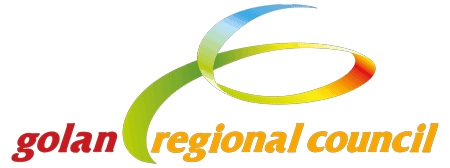home page / visitor information
The Golan is a beautiful and fascinating area that offers visitors many diverse activities and attractions all year round.
We want your experience to be fun, meaningful, and memorable, so we have prepared for you a complete list of safety rules that will help you enjoy your trip, and allow you to arrive back home safely.

Katzrin Police Department
Bikur Rofeh (Urgent Medical Care)
Fire Department

In the layout from the north of the Golan to the south, there are gas stations and parking lots for equipment (the information on them is detailed from north to south).
It is important to know – not everywhere will there be a gas station so it is important to pay attention before you run out of tank, that you will not be left without ….
![]() Majdal Shams
Majdal Shams![]() Masadeh
Masadeh![]() Bukata
Bukata![]() Katzrin
Katzrin![]() Eliad
Eliad![]() Givat Yoav
Givat Yoav
(Please remember that there are only a few gas stations in the Golan; make sure you don’t get stuck without fuel!)
![]() El-rom
El-rom![]() Merom golan
Merom golan![]() Wasset Junction
Wasset Junction![]() Ein Zivan
Ein Zivan![]() Ortal
Ortal![]() Alonei HaBashan
Alonei HaBashan![]() Keshet
Keshet![]() Katzrin
Katzrin![]() Had Nes
Had Nes![]() Aniam
Aniam![]() Yonatan
Yonatan![]() Kanaf
Kanaf![]() Ma’ale Gamla
Ma’ale Gamla![]() Ramot
Ramot![]() Natur
Natur![]() Nov
Nov![]() Ramat Magshimim
Ramat Magshimim![]() Hispin
Hispin![]() Avnei Eitan
Avnei Eitan![]() Eliad
Eliad![]() Bnei Yehuda
Bnei Yehuda![]() Givat Yoav
Givat Yoav![]() Neot golan
Neot golan![]() Afik
Afik![]() Kfar Haruv
Kfar Haruv

Public transportation in the Golan is run by the Golan Economic Association. Buses run daily, throughout the day, between the villages of the Golan and the nearby cities (Katzrin, Kiryat Shmona, Tiberias, etc.).
Those wanting to reach the Golan by public transportation (or use it for hiking and touring purposes) can use these buses to get from village to village and to various tourist sites. If you want to use public transportation during your trip, we recommend checking the public transportation websites before you arrive, to make sure all of the sites you’d like to see are indeed accessible.
The bus lines that are suitable for your trip can be found on Kol Kav website
Bus Schedule Call Center: 04-6851011
Hours: Sunday-Thursday, 8:00-13:00, 14:00-16:30
Golan Public Transportation Website
Dkalim Bagolan +972-54-5684776
Suleiman +972-4-6984888
Gesher Golan (Katzrin), *9924






Golan Toursim | +972-4-6962885
Email: Info-tour@megolan.org.il
©All rights reserved Golan Tourism 2021
Terms and Conditions of Service for Use of the Golan Tourism Website| OK Advertising Agency